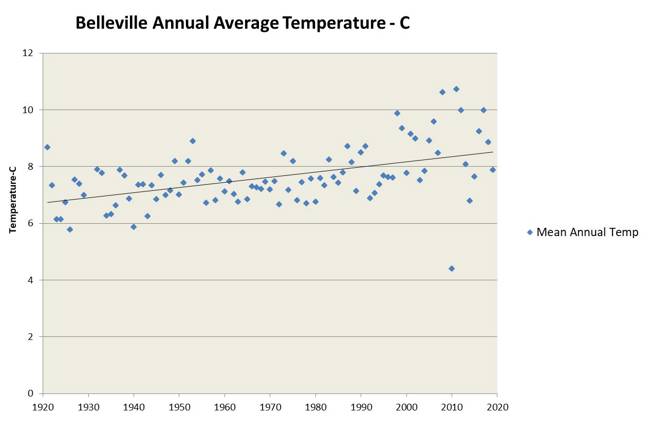People that have lived in the region for a long period of time are likely able to answer this question. However, as a lot of changes occur gradually many people learn to adapt and adjust. To help identify these changes we turn to climate monitoring stations that provide data over long periods of time. A monitoring station in the City of Belleville shows that the average annual temperature has warmed by 1.8 degrees Celsius over the past 100 years. Precipitation events also appear to be larger and more intense including more winter rain storms and extreme weather events.







